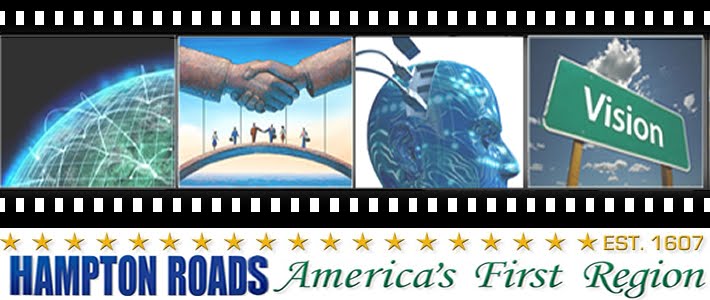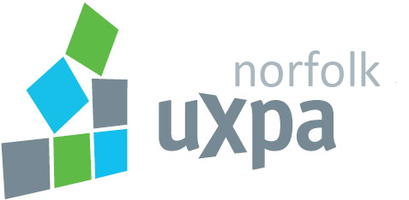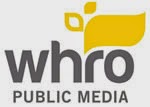


Valuing Community
WHRO’s new president says he wants to place greater emphasis on local programming while preserving the core elements of this ‘jewel in our own backyard’
By Tom Robotham
Tuesday, May. 8, 2007
Recently WHRO hired a new president and CEO: Bert Schmidt, a native of Syracuse, New York and, most recently, president and general manager of WVPT in Harrisonburg, Virginia.
Schmidt holds a BS in accounting and finance from Alfred University, a law degree from Syracuse University College of Law and an MBA from Syracuse University School of Management. Prior to coming to Virginia five years ago, he was executive vice president of WCNY-TV/FM in Syracuse.
He is currently serving as chairman of the Virginia Association of Public Television Stations.
Last week, during his first day on the job, I caught up with him in his office. Following are excerpts from our conversation.
This may not be a fair question because I know you’re new to the job and the community, but I’d like to start by asking for your initial impressions of WHRO, both in terms of its strengths and opportunities you might see for improvement.
Well, I’m pretty familiar with WHRO because I’ve been in Virginia for the last five years and I’ve chaired the Virginia Association of Public TV Stations….WHRO has always had a reputation nationally as a real leader in both technology and education. And I believe that’s where public broadcasting’s strengths lie. Certainly in education, because our mission is not based on shareholder value – it’s about improving the lives of people in the community….I’m not sure sometimes whether Hampton Roads understands the jewel they have right here in their own backyard with WHRO, and I’m excited to be here to help lead this organization through the next generation of public broadcasting.
I wonder if you could talk in a little more detail about the impact on the community….One criticism of WHRO, and affiliates across the country, is that there’s not nearly enough local programming.
At the station I came from, WVPT, we did 11 local shows, and the budget was a quarter of WHRO’s….So you can do things with a small budget. I want to learn about this community to understand what its needs are, because we’re the only locally owned electronic media that exists anymore, and we need to make sure we’re addressing the needs of the local community. So I’m going to be [doing] what I call my listening tour, going out with members and donors and the education community and other people throughout the area, trying to understand what are the needs of this community and then making sure we’re helping address those needs.
So local programming is high on your priority list.
Absolutely. Again, at my prior station they are currently doing 11 shows. When I got there they were doing, well, one-and-a-half. One show we tweaked. So that’s been a real emphasis. And frankly, that’s what public broadcasting [stations] can do that others can’t do. [Commerical stations are] owned by big companies, and they do news – that’s great – but when we talk about long-format programs that delve deep into issues, that’s the kind of stuff that public broadcasting can do.
What are some of the local programs you did there?
Well, as an example, we did a program called Virginia Farming. When I first moved to the area I was driving around, and of course in the Shenandoah Valley it’s very rural, there are lots of farms, so I said to my staff, "What are we doing for the farming community?" I got a lot of blank stares. I said, "Well I don’t know what it’s going to be but we need to do something to address the needs of the farming community." We talked to [farmers] and ultimately put together this program…, which has [been chosen] four years in a row as the best farming program in the state. So we’ll do the same kind of thing here, whether it’s for the military, or the African-American population or the Filipino population. We’ll be asking, what are we doing to serve those communities?
What does Virginia Farming look like?
The first 10 minutes are newsish, video in the field, and the second half is a talking-head interview with a key person within the state, and then the last three or four minutes are a lighter and a little more fun.
So it’s a multifaceted magazine show.
Yes. And it brings in enough money to cover its costs….
It seems to me that one challenge you might face with certain kinds of local programming here is that you’re in a fairly conservative community, working for an institution that has a perceived liberal bias – although some liberals say it’s too conservative.
When people say we’re liberal, I would ask them, in bringing…programs that are focused on educating children – programs like Sesame Street…, is that liberal – to bring a quality children’s program that doesn’t have them learning about violence? Programs that are on other networks [are] often the kinds of programs that you don’t want your kids to see. I have young kids. I can see when they’ve watched a kids’ program on a commercial network and all of a sudden they want a new toy that’s out, or a new cereal. When they’re watching public TV, they’re learning their numbers, they’re learning sharing – those kind of values. I don’t think that’s liberal or conservative. That’s a family value. I use that term maybe not in the political sense that gets thrown around, but more in the sense…that you value local community. That’s what we’re all about. If you don’t think local community is relevant, then we’re not for you. But if you think children are important, educating the community is important, addressing local issues is important, then [we are for you]. We’re not about advocating for a liberal cause or a conservative cause…. We all have our own personal views….But I’m more interested in letting voices be heard and letting viewers make decisions. There’s too much media out there that are liberal, conservative – there are all of these advocacy programs. We’re not about advocacy. We’re about bringing all voices out there. [WVPT is] doing a program now called Virginia Viewpoints. They bring liberal voices and conservative voices on a single topic, like gun control, for example…discussing the topic from every perspective….
Related to the liberal-conservative controversy is the challenge of trying to strike a balance between being provocative and not offending people. Certainly if you’re doing a show on, say, the African-American community or the military, there’s a potential to either offend people or to be so inoffensive as to be bland.
With many of these programs…the content is created by outside folks. So, for example in the military…we might want to meet with folks who work with the families of military folks…[and explore] the issues they may be facing. We aren’t creating the content; it’s the folks in these communities who are creating the content. If people get offended by frank discussion, then we might offend. But what we want to do is serve those populations. We certainly don’t want to offend anybody, but we’re not going to be so bland as to be boring either.
This relates more now to national programming. And Paula Kerger addressed this in my interview with her: A lot of people perceive a disconnect between the fund-drive programming and the regular programming. And she acknowledged that there is "a bit" of one. What are your feelings on that?
It’s interesting because I saw Paula at a conference a while back…and made the same statement that I would love to see the programs we do during these campaigns be a little more tied to the programs that public broadcasting viewers love. There are sometimes programs that we air because there’s a population that likes them, but they’re not the normal public broadcasting viewer. I [think] that we need to be able to do programs that are related to our mission but can also bring membership support in. It’s easy to say let’s bring in a program that may not be completely related to the [regular programming]….
I want to see more [regularly scheduled programs] be supported by our members. Recently PBS has done a good job of taking some of those regularly scheduled programs and structuring them in a way that we can actually go out and ask for support around them – Masterpiece Theater, for example. Those kinds of things that still meet the mission but can excite people to get to the phones. Again, membership still is our most important source of revenue. It’s members that make public broadcasting what it is, so you need to be able to attract those members. At the same time we want to stay true to the mission of public broadcasting….Fortunately…, Paula goes to stations throughout the country…and really listens. So it’s not like a commercial network where… all the decisions are made in the ivory tower. The programs are all made by local stations, and PBS just gets them out to everybody. Whether it’s WGBH, WNET or WHRO, these are shows made by local communities. So it’s a great model.
So, in tying that question back to the bigger issue of programming in general, how do you strike a balance between airing programs that have merit and airing those that have popular appeal? Obviously, they’re not always one and the same.
It is a tricky balance. When state funding has been reduced, which it has been in Virginia; when federal funding is flat, which it has been for many, many years, that makes a big part of your budget either flat or going down, the pressure is to raise more money locally. That can be done through membership; it can be done through corporate underwriting, or it can be done through for-profit, non-mission-related efforts. But without the money there is no mission. So we have to be aware that we are a business that needs money to operate….
What do you say to people who say that, regardless of what programs you do, public broadcasting is irrelevant because there’s such a variety of programming available today?
People who say that aren’t watching public TV….All of the networks that have tried to do what public broadcasting does…tend to [eventually] go to the bottom line and the lowest common denominator. Public broadcasting, because of our business model, has not had to lower the standards. We still have the greatest programming out there, and we’ve been able to do that for 40 some-odd years….
In my conversation with Paula, I obviously focused entirely on television. But one of the things that makes WHRO distinct and so valuable as an institution is that it includes two public radio stations. So I wonder if you could talk about any plans you might have for those two stations.
Well, both stations are amazingly successful. In fact WHRV was the model I was using to try to build a station out in the Shenandoah Valley….So I’m not sure there are a lot of up front changes. I want to be supportive of the efforts currently going on. I want to make sure we’re relevant locally. I want to talk to the community to see if there are needs not being met….But I love the schedule that we have…. I love the classical service that we provide…Classical music is dying in this country. It’s a shame. From a commercial standpoint it almost doesn’t exist anymore….You’re even seeing some public broadcasters shying away from classical and going more toward talk. The fact that we can have both…is wonderful.
So no plans to actually consolidate the stations?
Absolutely not. That’s never been on my mind.
And the music programming on the "talk" station – Out of the Box and Sinnett in Session, for example. Those are safe?
Absolutely…I’ve been in the building now for about three hours. I can’t guarantee anything. But certainly, I love all those programs…. Our focus will be on making sure we have the money to support those services and more.
The FCC has gotten a lot more aggressive in recent years, both in the size of its fines and in what they’re prepared to consider as offensive. Has that had a big chilling effect?
Well, when you look at a potential fine of over $300,000 for a word…[and a policy] that hasn’t been well defined, I think that [is a problem]. If you’re airing a program about World War II, and you have a soldier that’s being shot at and he swears, you know, is that appropriate to put on the air? I think a lot of people would argue yes. But [the policy] hasn’t been defined. So do I air the soldier swearing at the risk of a $300,000 fine? Or do I just bleep it to be safe? You can look at community standards. But I wish there was a little better definition of what is OK….
We have The War coming up [Ken Burns’ documentary on World War II], and we certainly hope we’re going to be able to air that unedited because the military folks deserve to have their story told unedited. To have people being shot at, and you’re hearing bleep, bleep, bleep really takes away from the experience. I think any of us would probably swear if we got shot in the leg.
Refresh my memory on how that works. Do they tell you in advance whether it’s OK?
That would be more a question for Paula Kerger. We get advice from PBS.
So you’re not going to take the risk on yourself?
I don’t want to say that…Because we’ve aired programs that have been borderline….I don’t like to edit things if at all possible. Public funds make this organization possible, so I’ve got to take that into account. I would hate to lose $300,000 because we aired a breast or somebody saying the wrong word. But at the same time I really respect the producer who creates the content and really don’t want to change that content where possible. So it’s really a [matter] of looking at every instance individually….We had a program, Casanova, that had some questionable content. And you have to make the call [and ask] how does the local community feel about it? What are the community standards?
How do you gauge those community standards?
Talking to the community and listening. We have board representation….We are, of course, owned by the schools and have ongoing dialogue – and one of my roles is to be out there understanding what people like and dislike. And that will take a while….And I’m sure I’ll get very divergent opinions as well….But I’ll get a general sense of how the community feels about certain topics….
So one final question: What do you think is the biggest challenge that you and WHRO as an institution are going to face in the coming years?
I think broadcast media are changing dramatically. People are not just sitting back and letting the shows fall over them….With TiVo and iPods and streaming video – more and more people are getting their content that way. And we need to be positioned with all of our content so that people can get it when they want it. Public broadcasting content is really perfectly set up for that….Twenty-six of the top 100 podcasts are from public broadcasting. But we need to do more of that.












































